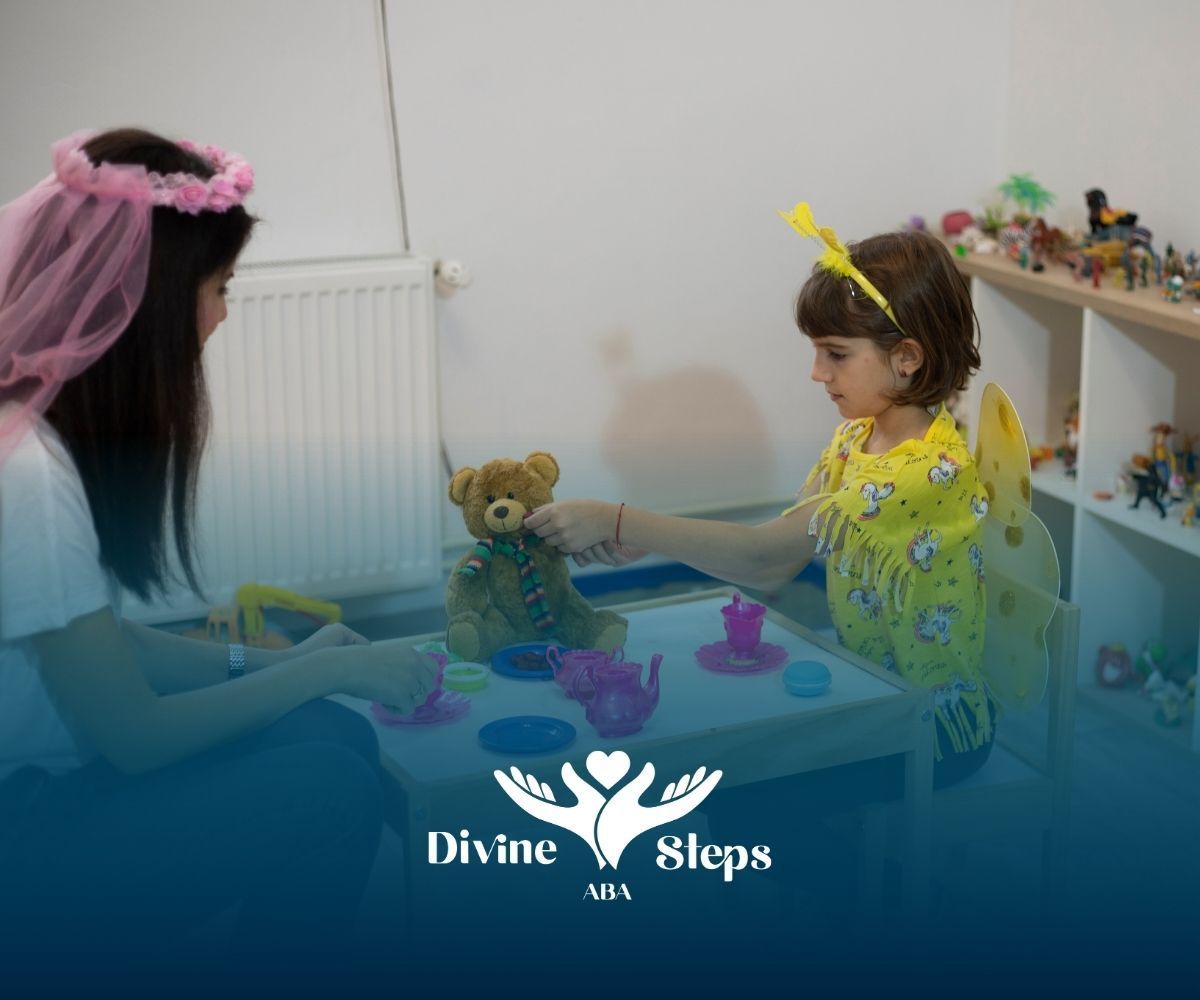Website by CWS
What Makes ABA Effective for Behavior Change?
Key Highlights
- Applied Behavior Analysis (ABA) is a leading approach in behavior modification, focusing on understanding and influencing behavior systematically.
- ABA therapy employs positive reinforcement to encourage desired behavior changes and reduce negative behaviors.
- It is widely valued for helping those on the autism spectrum develop vital communication, social, and adaptive skills.
- Techniques like Discrete Trial Training (DTT) and Pivotal Response Treatment (PRT) form the core of ABA practices.
- Customized plans based on data collection and behavior analysis ensure tailored care for every individual.
- Beyond autism, ABA benefits individuals with developmental disorders and other behavioral challenges effectively.
Behavior affects everything we do—from how we communicate to how we handle challenges. But when behavior gets in the way of growth, ABA therapy can offer a path forward.
I’ll never forget working with an 8-year-old who struggled with transitions at school. Even a simple switch from recess to math led to tears and shutdowns.
With consistent in-home ABA support and gentle reinforcement, she learned how to follow visual schedules—and within weeks, she could transition independently with confidence. That kind of progress sticks with you.
The Science Behind ABA Therapy
How Learning Theory Shapes Behavior
Learning theory—especially operant conditioning—drives much of ABA. According to the American Psychological Association, people learn behaviors through interaction with their environment.
Repeating behaviors with positive results makes those behaviors more likely to happen again.
In practice, this means therapists look at each situation using the Antecedent-Behavior-Consequence (ABC) model.
If a child throws a toy after being told “clean up,” the ABA team explores what led up to that moment and what the consequence was. This allows us to adjust the environment, not just the behavior.
“Behavior is a function of its consequences.” — B.F. Skinner, founder of behaviorism.
The Role of Reinforcement
Positive reinforcement is a cornerstone of ABA. If a child successfully asks for help instead of screaming, and they get praise or a favorite toy, they learn that communication gets results.
Research published in Behavior Analysis in Practice (2022) found that children receiving consistent positive reinforcement showed a 25–40% increase in adaptive skills within the first six months of therapy.
How ABA Therapy Developed
A Brief History
ABA began in the 1960s with Dr. Ole Ivar Lovaas, who introduced Early Intensive Behavioral Intervention (EIBI) for children with autism. Over the decades, ABA evolved from lab settings into everyday environments—schools, homes, and communities.
Key milestones include:
- 1998 – Establishment of the Behavior Analyst Certification Board (BACB)
- 2001 – U.S. Surgeon General endorsed ABA as a leading autism treatment
- 2012 – APA officially recognized ABA as an evidence-based therapy
Today, ABA is widely used for individuals with developmental delays, behavioral challenges, and even traumatic brain injuries.
Tools & Techniques That Drive Change
Discrete Trial Training (DTT)
DTT involves breaking down tasks into small, teachable steps. A therapist gives a clear instruction, provides a prompt if needed, and follows up with reinforcement.
It’s structured, fast-paced, and excellent for teaching skills like matching, identifying emotions, or brushing teeth.
In my own sessions, I’ve used DTT to help a child learn to request toys. After two weeks, he could say “ball” instead of pointing—and his face lit up the first time someone understood him.
Pivotal Response Treatment (PRT)
PRT focuses on motivation and natural learning opportunities. It teaches pivotal skills like initiating conversation, rather than isolated tasks.
For instance, instead of teaching a child to say “cookie” only when asked, we might encourage them to request it spontaneously during snack time.
Natural Environment Teaching (NET)
NET embeds learning in real-world settings. If a child is learning to label items, we might practice that skill during a walk around the block or while helping with groceries.
According to a 2021 review in Journal of Autism and Developmental Disorders, combining PRT and NET significantly improves generalization and spontaneous language in children with ASD.
Making Decisions Based on Data
The Importance of Observation
ABA relies heavily on data collection. Therapists observe behaviors, track frequency or duration, and look for patterns over time. We often use:
- Event recording (how often a behavior occurs)
- Interval recording (whether it happens during set periods)
- Duration tracking (how long it lasts)
These measurements help identify trends and ensure interventions are working.
Why Continuous Monitoring Matters
Constant data helps guide decisions. If a child’s aggression decreases after reinforcement strategies are added, we have concrete evidence the plan is working. It’s not guesswork—it’s data-driven care.
Customizing ABA to Fit Individual Needs
Functional Behavior Assessments (FBA)
An FBA helps identify why a behavior happens. Is the child avoiding a task? Seeking attention? Once we know the function, we can teach more appropriate behaviors.
Behavior Intervention Plans (BIPs)
Based on the FBA, therapists create a BIP. This outlines:
- Target behaviors
- Goals
- Teaching strategies
- Reinforcement schedules
Plans are reviewed regularly and adjusted based on data. Collaboration with families and schools makes the process more effective and consistent.
Is ABA Effective? What the Research Says
Evidence-Based Results
Multiple studies confirm the effectiveness of ABA. According to the National Autism Center, intensive ABA therapy leads to significant improvements in communication, daily living skills, and social interactions for 80–90% of children.
One well-known study by Lovaas (1987) found that nearly 50% of children who received early ABA therapy achieved average IQ levels by age seven.
I’ve seen children go from nonverbal to speaking in full sentences. I’ve worked with teens who learned to cook simple meals and manage emotions through structured ABA programs. It’s not a quick fix, but when done well, it’s life-changing.
Beyond Autism: ABA’s Broader Impact
ABA in Schools and Homes
ABA isn’t only for children with autism. Schools use it to support students with ADHD, learning disorders, and behavioral challenges. At home, parents learn how to use reinforcement and structure to guide behavior.
Teaching Life Skills
ABA helps teens and adults build independence—like using public transportation, budgeting, or job interviewing. For example, teaching a young adult to follow a morning routine can mean the difference between needing full-time support or managing their own apartment.
Conclusion: Behavior Can Be Changed—With the Right Support
ABA therapy uses science, compassion, and structure to create real change. Through tools like reinforcement, personalized plans, and continuous data, it helps people build meaningful skills and reduce challenges.
Whether it’s helping a child learn to speak or supporting an adult to live more independently, ABA offers a framework that’s adaptable and evidence-based. And most importantly, it offers hope.
At Divine Steps ABA, we provide compassionate, personalized care backed by science. Our Board Certified Behavior Analysts (BCBAs) are here to support families across Maryland, Virginia, and North Carolina with evidence-based strategies that work.
Whether you’re seeking support for your child or exploring therapy options for a loved one, our team is ready to help.
Contact Divine Steps ABA today to schedule a consultation and learn how we can help your child take confident steps forward.
Frequently Asked Questions
How long does it take to see results from ABA therapy?
That depends on the individual’s needs and consistency of therapy. Some families see small changes in a few weeks; others notice major improvements over months. The key is regular, high-quality intervention.
What are the criticisms of ABA?
Some critics argue that traditional ABA can be too rigid or compliance-focused. Others worry that it overlooks emotional well-being. That’s why modern ABA emphasizes individual choice, natural learning, and compassionate care, aligned with guidelines from the Council of Autism Service Providers (CASP).
Can ABA help people without autism?
Yes. ABA is effective for people with developmental disorders, behavioral challenges, and even anxiety or trauma. It’s used in classrooms, group homes, hospitals, and private clinics.
Sources:
- https://pmc.ncbi.nlm.nih.gov/articles/PMC2859800/
- https://pmc.ncbi.nlm.nih.gov/articles/PMC8702444/
- https://bmcpsychology.biomedcentral.com/articles/10.1186/s40359-024-02045-5
- https://www.autismspeaks.org/applied-behavior-analysis
- https://www.appliedbehavioranalysisedu.org/2023/12/future-of-applied-behavior-analysis-aba-new-research-areas-and-findings/
- https://bmcpsychiatry.biomedcentral.com/articles/10.1186/s12888-022-04412-1




